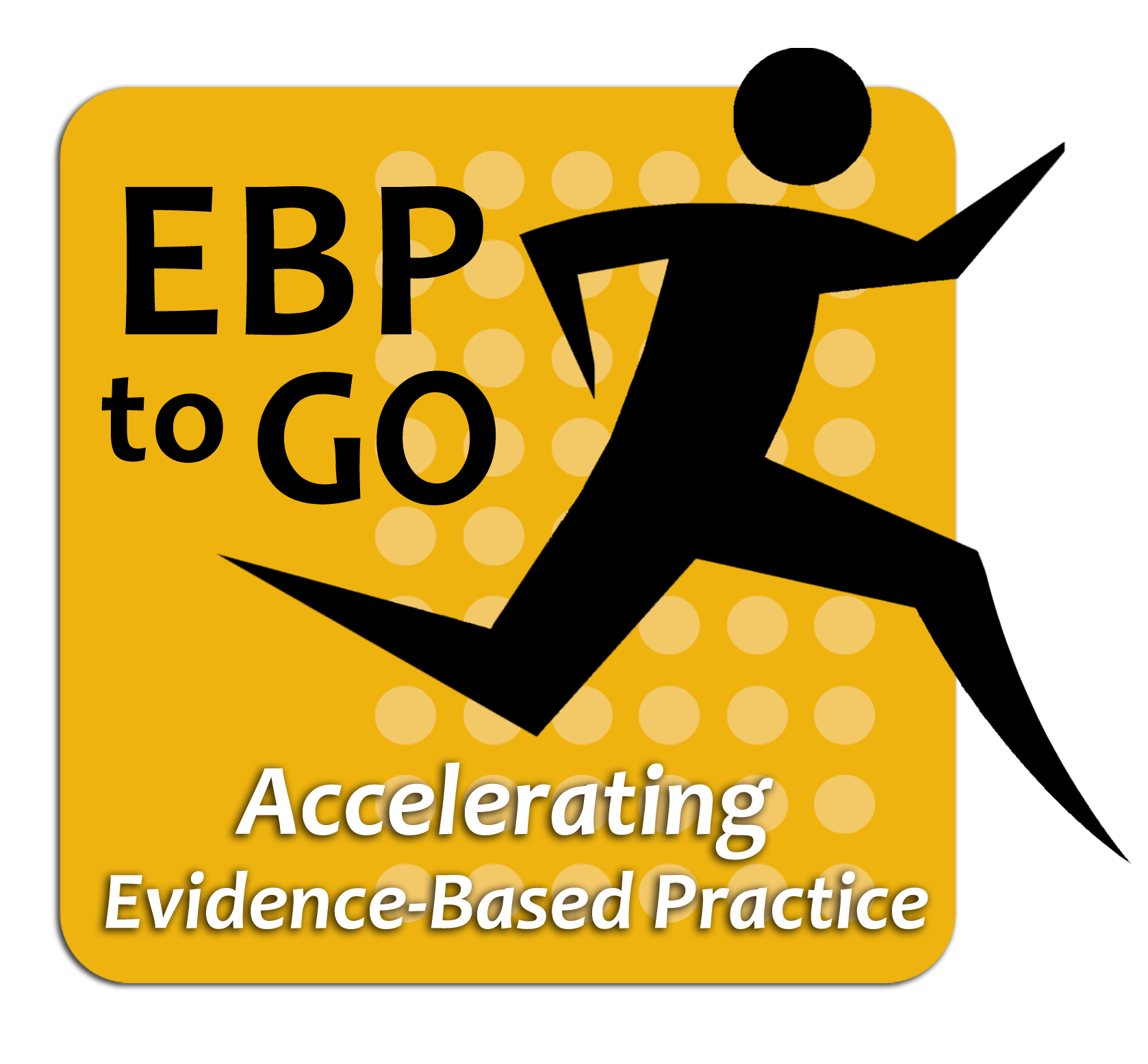EBP to Go®: Accelerating Evidence-Based Practice

Avoid recreating the wheel! The ready to use EBP to GO booklets provide clinically relevant pre-screened resources and tools to supplement clinical practice recommendations and support adoption of EBP on diverse topics. The tools facilitate nurses in accelerating the EBP process and building team expertise for implementation and evaluation.
Each publication follows this template, as appropriate:
- Quick reference guide
- Key project articles for the core group and team leader
- Practice guidelines
- Decision algorithm
- Online resources
- Budget items
- Project evaluation
- Sample evaluation tools
EBP to Go Publications
Read more about each EBP to Go topic. Publications are available for purchase, select your payment method below.
How do you assess fatigue and physical activity in adult oncology patients? Cancer-related fatigue is a prevalent, distressing symptom associated with cancer and its treatment. Fatigue and physical activity assessments must be completed in addition to providing a plan for self-monitoring, prompting and supporting regular activity.
Do you allow family pets to visit patients with extended hospital stays? Pets provide physical, psychological, and social benefits to their owner due to the strong bond formed. Pet visits can be safe for the patient, roommate, pet, family, and others in the facility and any risk of zoonotic infection can be managed. Learn more about our Family Pet and Certified Dog Visitation Programs.
What scheduling guidelines are in place for nursing staff at your facility? Long work hours correlate with nurse fatigue and subsequent adverse nurse and patient outcomes. Use of fatigue-mitigating scheduling guidelines may improve patient satisfaction and may decrease hospital acquired infections, falls with injury, needlestick injuries, and medication administration errors.
Need an evidence-based assessment tool for oral mucositis? Lack of consistent use of reliable and valid tools for the assessment of oral mucositis has resulted in limited progress in its prevention and treatment. Assessment captures changes in the oral mucosa to track progression and screen for complications as well as being sensitive to nursing interventions for prevention of oral mucositis.
What is the low cost but often under-utilized intervention for patients with oral mucositis? There is no treatment currently available (e.g., a medication) to prevent oral mucositis, and research to guide practice is limited. Attention needs to be focused on promoting good oral health through use of oral care, to decrease the severity and duration of oral mucositis.
How should pain be assessed for older adults? Patient preferences are an integral part of EBP and pain self-reporting. Pain assessment is an essential first step for effective management on complex medical-surgical units.
How do you manage varying degrees of hypothermia in ED trauma patients? Hypothermia contributes to poor patient outcomes and increased mortality. A nurse-driven protocol directs cumulative yet tapering interventions to meet individual patient needs.
Each EBP to Go is $40
$25 with $15 shipping fee
University of Iowa Health Care
Attn: Rosanna Seabold
Department of Nursing
200 Hawkins Dr, T100 GH
Iowa City, IA 52242
Locations and Offices
